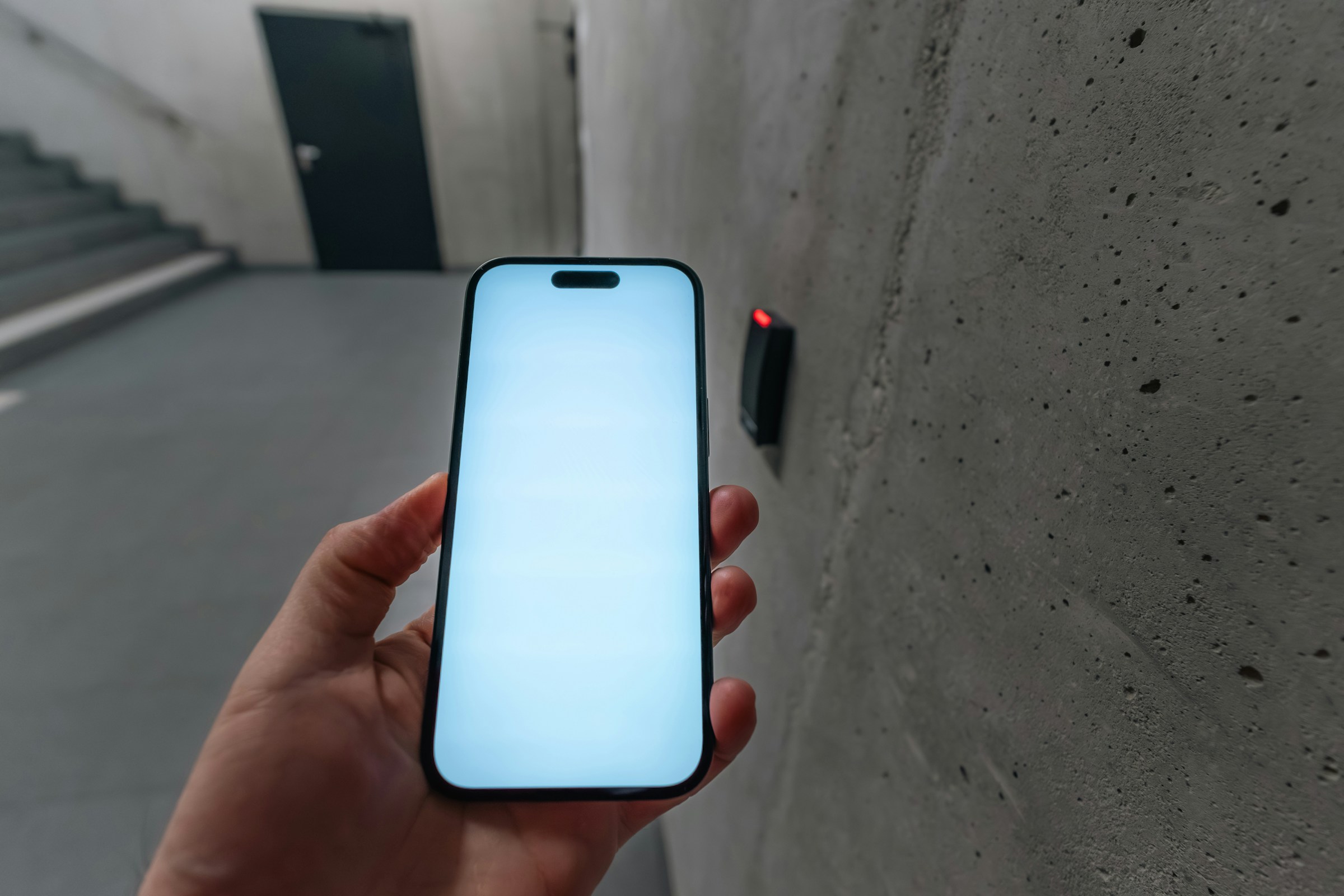.svg)

Picture a shopper tapping their phone to a product tag to get specs, reviews, loyalty points, and a discount code in seconds. That moment shows how NFC technology removes friction across contactless payments, smart tags, proximity marketing, access control, product authentication, ticketing, and asset tracking. Read on for clear examples from Best NFC Business Cards and smart packaging to loyalty programs, inventory management, and IoT integration that you can use right away.
To make that simple, Mobilo's digital business card turns a single tap into a complete contact, catalog, and loyalty experience without code or apps, helping you test NFC use cases fast and boost customer engagement.

NFC is a short-range radio protocol that enables two compatible devices to exchange small amounts of data when they are in proximity, typically within a few centimeters, making interactions deliberate and fast. Because it uses a near-field magnetic coupling instead of broad radio broadcasting, NFC feels instantaneous to the user and keeps accidental or remote interceptions unlikely.
NFC operates at 13.56 megahertz and relies on magnetic induction, not long-range radio. One device creates a magnetic field that powers a passive tag or talks to another powered device. Passive tags contain tiny chips and an antenna, drawing the energy they need from the reader field to send back a short, preprogrammed response.
Active devices, like phones or readers, have their own power and can both send and receive data. A connection begins when one device detects the presence of the other’s field and exchanges a brief handshake, followed by the transfer of small payloads, such as a URL, a token, or an instruction.
The few-centimeter requirement forces intent, which reduces accidental sharing and physical spoofing risks, and it keeps interactions frictionless because there is no pairing, PIN entry, or device discovery. That closeness is why contactless payments and secure access systems trust NFC for sensitive uses. The tap feels deliberate, and the link lasts only for the few seconds needed to exchange data.
Think of NFC as a tiny, local courier that hands off a single, valuable item, such as a payment token, a transit ticket, a Bluetooth pairing request, or a link to a profile. We see it everywhere that people want speed and certainty. This is evident in contactless payments at checkout, tapping into transit gates, pairing headphones with a single touch, and sharing digital business card links from an office badge or card.
That ubiquity is starting to matter in scale decisions. Over 2 billion NFC-enabled devices are in use worldwide, according to the NFC Forum, which helps explain why merchants and operators continue to invest in contactless infrastructure.
NFC runs in three modes:
Each mode keeps transfers intentionally short, optimized for a specific workflow rather than prolonged data exchange.
This pattern appears across travel and retail. Users want transactions or interactions to be immediate and invisible, thereby removing friction from routine tasks. It’s satisfying when a tap completes a payment or opens a gate.
That emotional ease translates directly into behavioral wins, faster lines, higher conversion at checkout, and fewer abandoned interactions. For sales teams, that same immediacy means fewer lost networking moments and better chances of turning brief encounters into tracked leads.
Adoption is accelerating, not slowing; NFC demand and infrastructure are growing as businesses prioritize speed and measurable outcomes. NFC technology is expected to grow at a CAGR of 17.9% from 2021 to 202. Therefore, choosing how to deploy it now significantly influences operational scale and return on investment later.

NFC can be used for far more than payments; it reliably removes friction at the moment of interaction, and when paired with team workflows, it converts brief encounters into measurable outcomes. Below are 21 concrete, team-focused NFC applications, each showing the real problem it solves and how it improves convenience, automation, personalization, or efficiency.
Payment is the obvious example, but the team-level win is lower reconciliation time and richer transaction metadata. When finance teams combine tap events with centralized reporting, disputes drop, and checkout throughput becomes a measurable KPI rather than an anecdote.
An NFC card that opens a personal landing page changes networking from a paper exchange to a tracked event, preserving context such as where the meeting took place and which team member made the introduction. That turns a forgotten face in a stack of cards into a CRM contact with tags, notes, and follow-up reminders.
Beyond unlocking doors, NFC keys can push guest preferences and stay histories to property systems at check-in, enabling immediate personalization of service. Housekeeping and ops teams save time when room state updates propagate automatically after a tap, reducing manual handoffs.
Using NFC for fares also creates usable ridership data in near real-time, allowing operators to smooth capacity by route and time slot. For corporate commuter programs, NFC badges provide HR and mobility teams with anonymized insights into employee travel patterns, eliminating the need for manual surveys.
Show the menu, apply dietary filters, offer loyalty options, and then log the visit to a CRM. That single tap replaces multiple steps, reducing the friction that causes customers to walk out without ordering or leaving feedback.
An NFC tag on packaging can authenticate a product and deliver targeted content, but the real value for brand teams lies in post-sale engagement metrics, such as how often purchasers open tutorials or redeem care instructions. That data informs customer success and reduces the number of returns.
NFC wristbands enable contactless entry, cashless bars, and targeted digital drops during the show. Event operations gain immediate attendance and spending telemetry, which helps sponsors and talent teams evaluate ROI by hour, not by vague post-event surveys.
Collecting reviews is unusually hard; NFC removes the friction by taking customers straight to the review page with a tap. This pattern appears across cafés and salons. When the tap skips search and form hunting, completion rates increase because the action aligns with the customer’s immediate intent.
NFC wristbands can deliver vetted medical data directly to clinicians’ terminals, speeding triage and reducing chart errors. In high-pressure moments, a single tap that surfaces allergies and advance directives can shorten decision time and reduce cognitive load for providers.
NFC-based loyalty replaces punch cards with immediate point updates and campaign segmentation, allowing marketing to see which offers convert and which don’t. That visibility enables teams to A/B test reward thresholds and attribute revenue growth to specific program changes.
Embedding NFC in parts enables robotic arms to identify components and assembly instructions in real-time, reducing human sorting and misassembly. This reduces rework and makes line changeovers faster, which matters when manufacturers run multiple SKUs on short lead times.
NFC keys and fobs on charging stations simplify user authentication and brand extension, while stations that return usage logs help operators schedule maintenance before failures occur. For fleet managers, NFC-enabled charge events become billable records rather than manual reconciliations.
Choosing the right tag form factor, such as flexible FPC, epoxy mini tag, or PVC laminate, is crucial because tags must withstand the environment and fit the specific asset. When tag selection matches acoustic, thermal, or mechanical constraints, teams spend less time troubleshooting read failures and more time extracting location and lifecycle data.
NFC can carry an authorized identity token to verify devices, compressing ID checks into a single intentional tap. For account opening or kiosk interactions, this reduces queue time and lowers the risk of human error in transcribing identity data.
Tapping toys or game pads to trigger in-game content creates collectible, physical-digital play that increases engagement. For product teams, the key metrics are session length and repeat activation rates, which help determine where to invest in additional NFC-enabled accessories.
NFC tags enable staff to update inventory status with a simple tap, eliminating the need for spreadsheet updates and eliminating constraints related to barcode line-of-sight. When cycles are short and SKUs are numerous, NFC inventory updates reduce counting time and shrinkage by integrating checks into the standard workflow.
An NFC tap can securely provision network credentials to a guest device, eliminating the need for password sharing and reducing front-desk overhead. For venues with high turnover, this reduces administrative time and lowers the number of support tickets caused by forgotten passwords.
NFC-enabled posters or window displays can deliver contextual offers and measure engagement in ways banners cannot, because every tap is a deliberate conversion signal. Marketers gain clean attribution, enabling smarter spend decisions across channels.
Embedding NFC in displays or products allows shoppers to instantly access detailed specs, comparisons, and sustainable sourcing data, reducing hesitation at the point of decision. That transparency shortens the path from consideration to purchase and feeds behavioral signals back to merchandising teams.
NFC endpoints can enroll customers into loyalty programs, collect surveys, or automatically route help requests to the right staff member, allowing managers to see who tapped for help and why. As a result, staffing and training become data-driven rather than reactive.
Workers tapping NFC checkpoints provide live status updates that managers can use to reroute tasks and balance workloads in real-time. This kind of micro-status reduces idle time and keeps operations predictable as volume changes throughout the day.
It’s exhausting when promising contacts vanish because manual entry and slow workflows let momentum die, so if you want CRM-native automation that preserves context and speeds follow-up, consider Mobilo’s digital business cards. Book a demo and pilot it with 25 cards free, or claim the 25 cards free, worth $950 offer, and we will show you how automation converts event conversations into a tracked pipeline that you can measure.